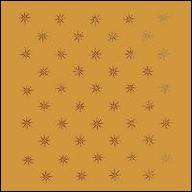Kirkegaard graduated from the Media Art Academy in Cologne in 2006, but he began releasing his sound works through a variety of labels as a student. His debut was 2002's Soaked (with Philip Jeck) on the U.K.'s Touch label, which he has worked with ever since. He followed it a year later with 01.02 on Bottrop Boy. In 2004, he was a founding member of the sound art collective freq_out, who released freq_out [0—8Hz] for Ash International. Between 2005 and 2008, Kirkegaard issued three major works through Touch -- Eldfjall, 4 Rooms (recorded in an abandoned chapel in a still radioactive Chernobyl), and Labyrinthitis -- the album that has long been considered his masterwork. He has also exhibited sound installations and photography at institutions throughout the world, including Museum of Modern Art, The Hood Museum, LOUISIANA, ARoS, KW, The Menil Collection, Rothko Chapel, Aichi Triennale, and Mori Art Museum. Kirkegaard's work is in the collection of LOUISIANA Museum of Modern Art in Denmark.
In 2012, he collaborated with Tobias Kirstein on Imperia for Posh Isolation, a manipulated field recording from the defunct nuclear power plant in Barsebäck in southern Sweden. He returned to Touch with 2013's Conversion, an LP that included two pieces based on Labyrinthitis and "Church" (from 4 Rooms) in collaboration with the Danish classical ensemble Scenatet. The same year, he worked with pioneering Danish sound composer Else Marie Pade (1927-2016) on Svævninger, issued by Important Records. 40 Days of Silence, a soundtrack for the film by Uzbek director Saodat Ismailova, was released on Von.
ARC was the first of two works that appeared in 2015. Originally commissioned as a soundtrack to Carl Theodor Dreyer's silent film The Passion of Joan of Arc (1928), Kirkegaard used fragments of music from her time, and stretched it to expose the mystically charged atmosphere that could simultaneously declare the saint both a visionary and a heretic. His second offering that year was a triple-cassette entitled 5 Pieces for Posh Isolation. These works included the underwater recordings of "Æsturarium," which turns the sounds of the Hudson River and its swirling sediments into a 29-minute white-noise suite; "Iron Wind," which captures the vibrations of German fences; "Déjà Vu," a feedback conversation between eight empty rooms; "Fool's Fire," an electrified needle picking up radio waves from crystals; and "Under Bjerget," a 58-minute meditation of rattling tubes in a Copenhagen basement, glacially moving from drone to pulse to rumble. Rolling Stone magazine selected it as one of its Top 20 Avant Albums of 2015 -- despite the fact it was issued in an edition of 200 copies. A year later, Kirkegaard was named sound-artist-in-residence at St. John's College, University of Oxford, U.K.
In 2017, he and fellow Danish sound artist Niels Lyhne Løkkegaard collaborated on Descending, two long pieces created from room resonances and performed by the Aarhus Jazz Orchestra. Important released two Kirkegaard albums in June 2019: CD Phonurgia Metallis and limited LP Black Metal Square, both consisting of pieces for piezo sensor and contact speaker. In September of the same year, TOPOS, an arts organization co-founded by Kirkegaard, released Opus Mors, a four-LP set themed around death, featuring recordings from autopsies and morgues. Time Is Local, a collaboration with We Like We, appeared on Sonic Pieces the same month. ~ Thom Jurek, Rovi


















